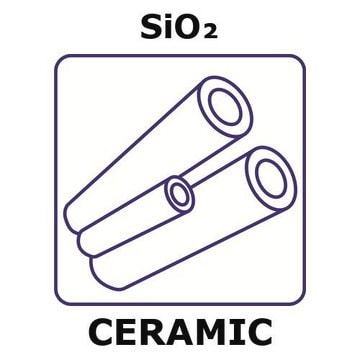30-0901
Tetrahydrofuran
≥99.0%, SAJ first grade, contains BHT as stabilizer
Synonym(s):
THF, Butylene oxide, Oxolane, Tetramethylene oxide
About This Item
Recommended Products
product name
Tetrahydrofuran, SAJ first grade, ≥99.0%
grade
SAJ first grade
vapor density
2.5 (vs air)
vapor pressure
114 mmHg ( 15 °C)
143 mmHg ( 20 °C)
Assay
≥99.0%
form
liquid
autoignition temp.
610 °F
contains
BHT as stabilizer
expl. lim.
1.8-11.8 %
availability
available only in Japan
refractive index
n20/D 1.407 (lit.)
pH
~7
bp
65-67 °C (lit.)
mp
−108 °C (lit.)
density
0.889 g/mL at 25 °C (lit.)
SMILES string
C1CCOC1
InChI
1S/C4H8O/c1-2-4-5-3-1/h1-4H2
InChI key
WYURNTSHIVDZCO-UHFFFAOYSA-N
Looking for similar products? Visit Product Comparison Guide
Application
- Buffer systems for environmental toxicology: A study utilized buffer concentrates within a tiered regulatory framework for aquatic risk assessment of pesticides, emphasizing the critical role of standardized buffer systems in maintaining consistent experimental conditions (Santos et al., 2024).
- Buffer concentrate in pharmaceutical formulations: Buffer concentrates were used in the development of a prolonged permeation in situ gel for Levofloxacin HCl-Salicylic Acid, underlining the importance of buffer systems in drug release modulation and stability (Khaing et al., 2024).
- Buffer concentrate in diagnostic assays: The formulation of lateral flow devices for the detection of urinary biomarkers in kidney health assessments incorporated buffer concentrates to ensure optimal reagent performance and reaction kinetics (D Souza et al., 2024).
Signal Word
Danger
Hazard Statements
Precautionary Statements
Hazard Classifications
Acute Tox. 4 Oral - Carc. 2 - Eye Irrit. 2 - Flam. Liq. 2 - STOT SE 3
Target Organs
Respiratory system
Supplementary Hazards
Storage Class Code
3 - Flammable liquids
WGK
WGK 1
Flash Point(F)
5.9 °F
Flash Point(C)
-14.5 °C
Certificates of Analysis (COA)
Search for Certificates of Analysis (COA) by entering the products Lot/Batch Number. Lot and Batch Numbers can be found on a product’s label following the words ‘Lot’ or ‘Batch’.
Already Own This Product?
Find documentation for the products that you have recently purchased in the Document Library.
Our team of scientists has experience in all areas of research including Life Science, Material Science, Chemical Synthesis, Chromatography, Analytical and many others.
Contact Technical Service






